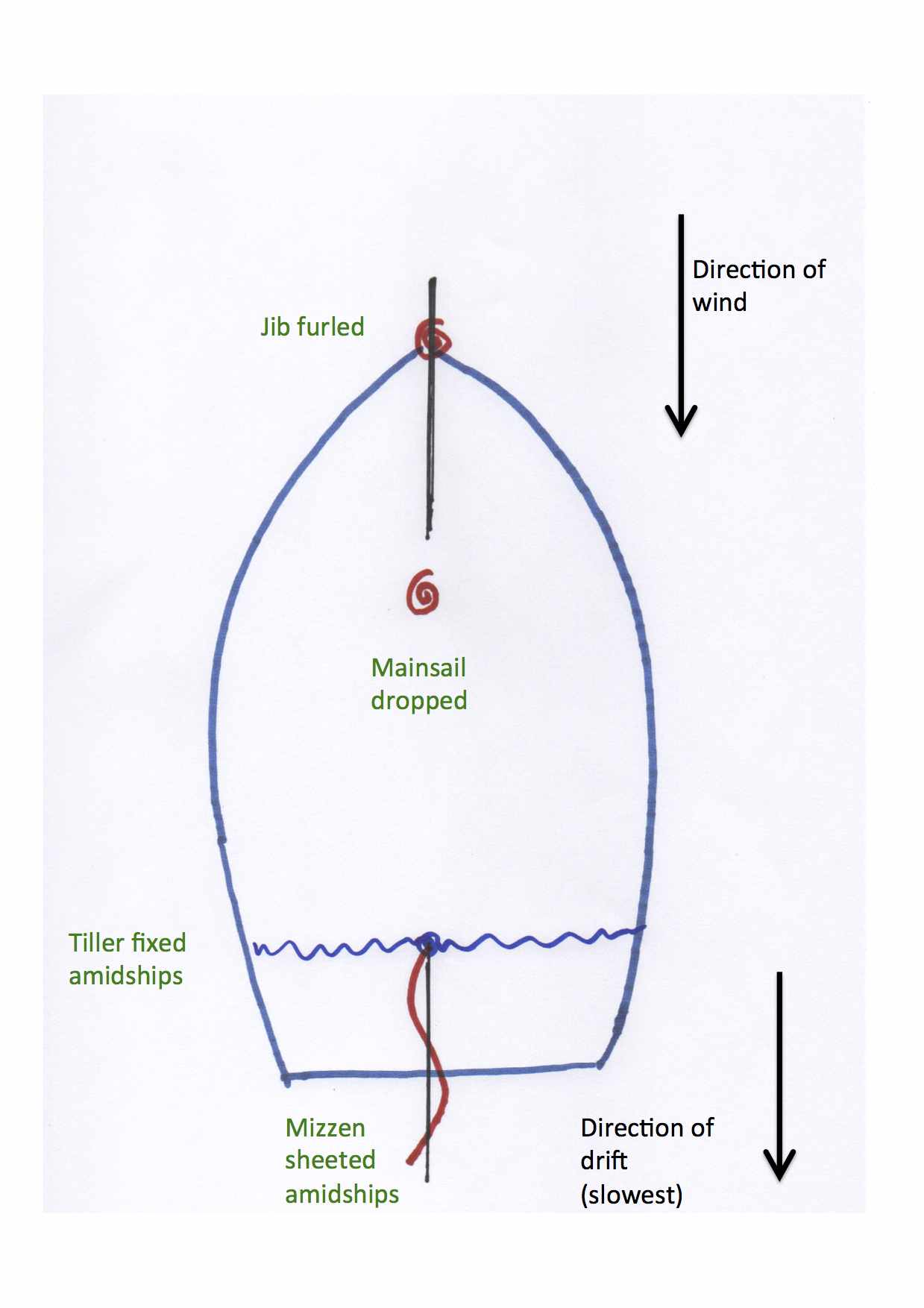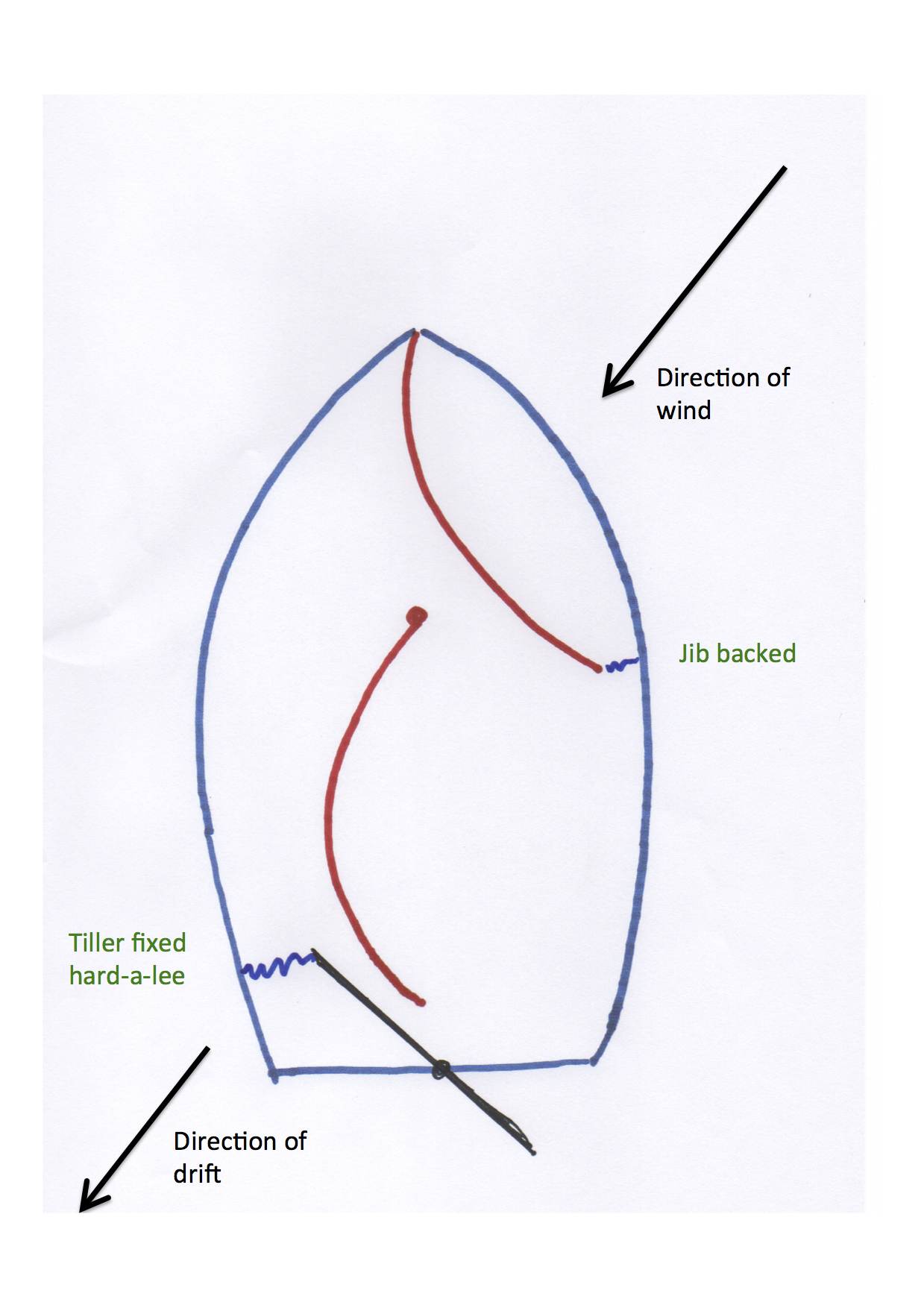Despite its usefulness in taking a break from crashing to windward through rough seas, and even in gentler conditions, there is very little written about heaving to in a ketch or yawl. This could be because unlike in a sloop, it is difficult to achieve a balance between the sails and the rudder that provides stability and reduces the drift downwind.
In a long keeled sloop heaving to is relatively simple:
- Go on to the opposite tack but leave the foresail backed
- Ease some of the tension in the mainsheet
- Fasten the tiller hard over to leeward
On a centreboard yawl with a self-tacking jib like the BR20, it is not so simple. You can try this:
- Go on to the opposite tack and tie the self tacking boom hard over to windward, so that the small jib is backed
- Ease the mainsheet somewhat
- Keep the mizzen sheeted hard in amidships
- Raise the centreboard a little
- Raise the rudder a little (to give more leverage) and fasten the tiller hard over to leeward
However, you may find that you do not point high enough and that the wind and the waves are uncomfortably on your beam, which in a big sea can be dangerous. Your rate of drift may also be higher than you might like.

A conventional approach to heaving to in a yawl such as the BR20: wind uncomfortably on the beam and drifting leewards at quite a rate.
Furling away the jib and easing the mainsheet further can put the bows more into the wind and also slow down the rate of drift. There is still a bit of a problem in the cockpit with a flapping mainsail.

An alternative approach to heaving to in a yawl: furl the jib away and ease the mainsheet and the boat will present to the wind more like the sloop above, with a slower rate of drift astern
Yawls and ketches have one great advantage over a sloop – they have an extra sail far astern. By furling the jib and dropping the mainsail, keeping the tiller amidships and the mizzen sheeted hard amidships, the boat will face straight into wind, weathercocking a little as it drifts slowly astern. This is probably the most comfortable way of taking a breather.
If you want to further slow the drift astern, you can drop a bucket or drogue on a line over the bow. It would be best if the line is attached by bowline to a bridle tied to each forward horn cleat and then through the bow fairleads. Alternatively (heresy!) put the outboard into slow ahead.

Weathercocking into the wind in a yawl: a slow drift astern can be slowed further by dropping a bucket or drogue on a line over the bow or putting the outboard into slow ahead.
Whichever method you use to slow down and take a breather, you will need a tiller tamer, which is described in a separate article in this library. None of the methods of heaving to described above will work unless you have some means of fixing the tiller, whether hard over to leeward or amidships.
Graham W November ‘2012

